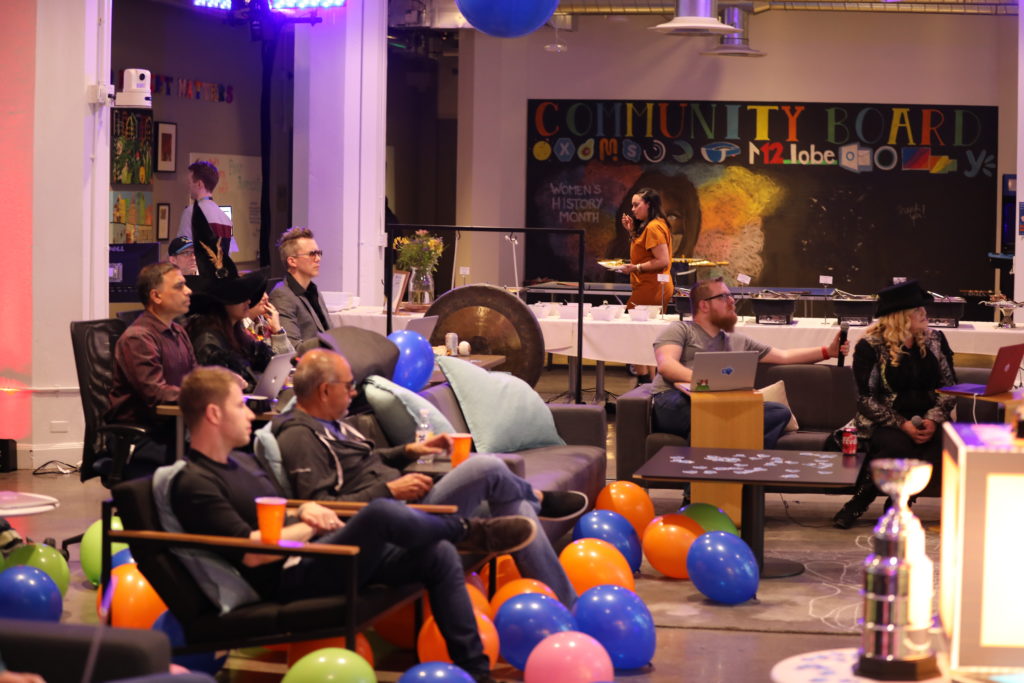Every year our Bay Area Garage, with locations in Silicon Valley and San Francisco, hosts a spring hackathon with teams across our Experiences and Devices group.
The Garage is a maker space where employees can go piece together solutions, create their own projects or learn about the many new technologies Microsoft is researching. We believe good ideas come from everywhere, regardless of role or discipline. Our space empowers employees to create their ideas—no matter if they are scrapped or ultimately brought to market. The most important thing is that individuals grow along the way and create something new.
(One of The Garage’s machines that empowers employees to create their ideas and projects)
During our spring hack, we ground ourselves in three main principles:
- Fix a problem. Whether it is something in our product or an issue you notice with our hall monitors.
- Hack the solution. Two weeks is all you get, so time to get creative fast.
- Learn something new. A different technology or something about a team member. It doesn’t matter as long as we grow in the process

(Our hackathon judges lined up to ask questions and select a winner)
Many teams in both Silicon Valley and San Francisco competed and shared product improvements for future updates. However, there were some that had other ideas.
Yammer’s Maria Daniel and Kaleem Rahman explored the role machine learning could play in electronic music production. They were able to create a soundtrack that evolved based on what the algorithm deemed popular. It was created using Magenta, Ableton, and Ableton Push. They then added an extra element to make it irresistible. Inspirational recorded quotes from Murali Sitaram, our general manager of Yammer and Office 365 groups.
“As a team we learned tools like Magenta can mutate your track in fun, whimsical, and sometimes, very logical ways,” they noted. “If you encounter a creative block, it could provide ways to snap out of it.”
(Yammer’s Maria Daniel and Kaleem Rahman formed team Machine Learning, Music, Murali)
Then there were other projects that took a more hands-off approach. Dylan Wang from Outlook Mobile created a computer game controlled by brain power. The Garage produced an electroencephalogram (EEG) monitoring headset for him to track brain waves. The information then was used as a control scheme. In the program, the cars were powered based on concentration levels from the connected participants.
“I learned that advanced EEG analysis requires calibration for each person’s brain and a general knowledge of neural science as well as signal processing. Anytime a project is working with software and hardware, things are exponentially more complicated.” – Dylan Wang, Outlook Mobile

(Dylan Wang’s EEG racing game showed concentration as an input control method)
His fellow Outlook Mobile colleague Peter Fong tracked EEGs from facial movement to control the mobile app they work on daily. Through trial and error, blinking and jaw clenching were found to be the most effective control methods.
“Brainwaves are incredibly complex, and patterns are hard to detect just by looking at the waves with human eye,” Peter said. “There is an opportunity to use machine learning classification algorithms to identify different set of brainwaves and navigate just by thinking differently.”
![]()
(Peter Fong’s EEG tracking used facial movement to control our Outlook Mobile app)
There is never a shortage of creative solutions being developed here at Microsoft in the Bay Area. Hackathons are common, whether they happen across groups or are team focused.
If you are creative, like solving problems, and learning new ways of doing things visit our Careers page at: https://aka.ms/MicrosoftBayAreaCareers.



